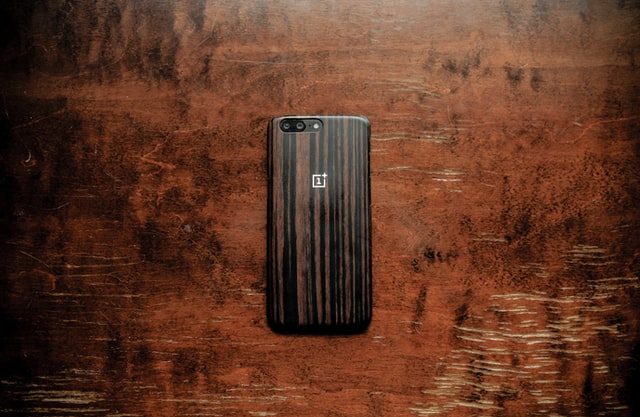Birth of a Challenger
2014 is aptly called the watershed year for the global smartphone industry. A little-known player called OnePlus was set to break the duopoly of the leading brands Samsung and Apple. Carrying the menacing moniker of ‘the flagship killer,’ the debutante Chinese brand has surely given the industry leaders a run for their money over the years that followed.
The company was established in 2013 by Pete Lau (ex-Vice President, Oppo) and Carl Pei. Once a humble start-up with only 5 employees, OnePlus today employs 2700 people globally and boasts ~2.0 Bn USD turnover. It was this initial team that is credited for conceptualizing the first OnePlus phone. For all non-Android users, the team quickly identified key reasons for not using an Android phone– poor build quality, non-intuitive software, and accompanying bloatware.
It is interesting to note that with these insights in mind, the team wanted to create a smartphone with good build quality, great design, and attention to detail. However, it was only during the prototyping stage of the OnePlus One that Carl and Pete realized that they could potentially launch a ‘flagship killer.’ Owing to their high price points, smartphones were hitherto accessible to only the rich, and Carl and Pete saw this as a great opportunity to change that. The early strategy was to appeal technology-savvy customers who would be willing to adopt its cutting-edge technology and design.
CX at the heart of OnePlus Strategy
The duo also realized that one of the reasons Apple had consistently dominated the smartphone market was the superior customer experience their devices promised. In contrast, it seemed that manufacturers of Android phones were driving product differentiation only by loading them with features – user needs seemed to have been sidestepped.
Accordingly, over the years, as an integral part of their strategy, OnePlus has kept user requirements and experience at the heart of their products and customer service, something that has given them a significant competitive advantage.
OnePlus has uniquely focused on building a strong community that has over 5 million members in India alone. User can submit their ideas to OnePlus. This community provides a bridge between the users and OnePlus management, keeping them informed of the latest features its loyal users want.
This means that OnePlus handsets aren’t necessarily featured-packed. However, they retain and deliver excellence on the aspects that their users value the most. This saves them R&D costs, which are then passed on to the customer.
Bold Marketing Strategy of OnePlus
When it came to marketing their first phone, OnePlus decided to adopt an audacious and slightly maverick strategy. They offered the gadgets to consumers by invite only to spur a sense of exclusivity and demand. The invites were available through online contests and referrals from existing OnePlus customers. They did this to optimize their inventory and production as they did not know how many people would buy their products. The strategy also created a sense of exclusivity in the market.
Despite critics vehemently warning the company against the idea, the approach worked. The word of mouth publicity did much more than anybody could have imagined, helping sell 1.5 million handsets by the end of 2014 globally. All this with almost zilch spends on marketing!
The founders believed that big manufacturers could not camouflage poor products using huge marketing budgets. Accordingly, the company predominantly promoted its products by turning its customers into brand advocates by giving them access to great gadgets at highly competitive prices. OnePlus followed up the social media marketing with an advertising campaign. that poked fun at its competitors

During the initial years, OnePlus phones were sold through the company website exclusively, thus eliminating retailers, thereby improving the company’s margins and making product pricing competitive.

With ‘Never Settle’ as a tagline and campaigns such as ‘Smash the Past,’ the brand messaging became an inspiring call out to customers to leave behind the conventional and reinvent themselves by joining a revolution. This helped OnePlus acquire a humongous fanbase who got deeply invested in the brand and eventually turned into brand loyalists and advocates.
OnePlus’s Ingenious Pricing Strategy
OnePlus devices have always been known to promise crazy value for money. One way they have done this is by smartly shifting the reference point. Consider this, the OnePlus 6T McLaren edition (special edition version that came with all sorts of goodies) was priced ~30% higher than the base 6T version. With this limited-edition phone as a new reference point, the upgraded OnePlus 7, which was priced 10% below the McLaren 6T edition, seemed like a steal deal even though it was ~20% premium as compared to the base 6T!
OnePlus’s pricing strategy, just like Apple, is also to keep the price of their phones steady over their whole lifecycle until the next model is announced. Phone enthusiasts pay attention to the pricing and reviews made at the time of launch.
Basis this, they decide whether the phone is overpriced or good value, and these labels stick over time. And when users buy phones a few months later, they still think of OnePlus phones as affordable ones even though, at that point, the comparable flagships cost significantly less. This means that OnePlus’s profitability increases as production and marketing costs of these phones go down over time while still being seen as “providing great value.”
This contrasts with the approach followed by brands like LG that instantly get labeled as overpriced at launch and thus end up selling their phones at razor-thin margins during the majority of their lifecycle.
OnePlus Product Lifecycle Strategy
Another strategy OnePlus uses to keep its products fresh and top of mind is the staggered introduction of color and special edition variants during the product lifecycle. For example, the OnePlus 5T launched with Midnight Black version followed up with a Star Wars edition, Sandstone White, and Lava Red versions.
OnePlus can do this because they’re a focused company. Compared to Samsung, which launches several phones every year, the OnePlus launches just one or two. Focus also makes them agile and flexible, allowing them to change course mid-way if necessary.
Criticism
Originally positioned as the smartphone brand for enthusiasts, OnePlus have drawn flak over the last few years as they have tried to expand their customer base beyond their core market segment – launching multiple models every year to appeal to a variety of customers.
In the process, they seem to have lost focus and are increasingly being perceived as another mass-market player. In addition, this has alienated their loyal enthusiast customers who feel let down and left behind by the brand.
Over the past few years, OnePlus has moved from no paid promotions to heavy advertising by signing on A-listed celebrities like Robert Downey, Jr. Even in terms of route to market, OnePlus products today are available across leading e-tailers and brick and mortar stores globally. The ‘exclusivity’ angle is long gone.
In fact, critics believe that in the pursuit of a larger customer base and to keep costs competitive, OnePlus has started using the same business growth strategy, sales, and marketing channels, resources, hardware, etc., as Oppo, their sister concern. Thus, making it increasingly difficult for users to differentiate some of the OnePlus flagship phones from their comparable Oppo equivalents.
Will OnePlus manage to hold on to its core enthusiast segment that they had worked so hard to acquire, or will it become another mainstream brand vacating this space for a new enthusiast brand, only time will tell.
What is still commendable though is how this start-up has disrupted the smartphone industry globally, carving out a niche market for itself in a short span of time by focusing on the needs of its customers, launching a great range of products at a fantastic price to performance ratio and extraordinary community marketing.
-AMAZONPOLLY-ONLYWORDS-START-
Also, check out our most loved stories below

Why did Michelin, a tire company, decide to rate restaurants?
Is ‘Michelin Star’ by the same Michelin that sells tires, yes, it is! But Why? How a tire company evaluations became most coveted in the culinary industry?

Johnnie Walker – The legend that keeps walking!
Johnnie Walker is a 200 years old brand but it is still going strong with its marketing strategies and bold attitude to challenge the conventional norms.

Starbucks prices products on value not cost. Why?
In value-based pricing, products are price based on the perceived value instead of cost. Starbucks has mastered the art of value-based pricing. How?

Nike doesn’t sell shoes. It sells an idea!!
Nike has built one of the most powerful brands in the world through its benefit based marketing strategy. What is this strategy and how Nike has used it?

Domino’s is not a pizza delivery company. What is it then?
How one step towards digital transformation completely changed the brand perception of Domino’s from a pizza delivery company to a technology company?

BlackRock, the story of the world’s largest shadow bank
BlackRock has $7.9 trillion worth of Asset Under Management which is equal to 91 sovereign wealth funds managed. What made it unknown but a massive banker?

Why does Tesla’s Zero Dollar Budget Marketing Strategy work?
Touted as the most valuable car company in the world, Tesla firmly sticks to its zero dollar marketing. Then what is Tesla’s marketing strategy?

The Nokia Saga – Rise, Fall and Return
Nokia is a perfect case study of a business that once invincible but failed to maintain leadership as it did not innovate as fast as its competitors did!

Yahoo! The story of strategic mistakes
Yahoo’s story or case study is full of strategic mistakes. From wrong to missed acquisitions, wrong CEOs, the list is endless. No matter how great the product was!!

Apple – A Unique Take on Social Media Strategy
Apple’s social media strategy is extremely unusual. In this piece, we connect Apple’s unique and successful take on social media to its core values.
-AMAZONPOLLY-ONLYWORDS-END-















